- Home
- J. -H. Rosny aîné
The World of the Variants
The World of the Variants Read online
The Scientific Romances of
J.-H. Rosny Aîné
THE WORLD OF THE VARIANTS
And Other Strange Lands
translated, annotated and introduced by
Brian Stableford
A Black Coat Press Book
Introduction
This is the second volume of a six-volume collection of stories by J.-H. Rosny Aîné (“the Elder”), which includes all of his scientific romances, plus a number of other stories that have some relevance to his work in that genre.1
The contents of the six volumes are:
Volume 1. THE NAVIGATORS OF SPACE AND OTHER ALIEN ENCOUNTERS: The Xipehuz, The Skeptical Legend, Another World, The Death of the Earth, The Navigators of Space, The Astronauts.
Volume 2. THE WORLD OF THE VARIANTS AND OTHER STRANGE LANDS: Nymphaeum, The Depths of Kyamo, The Wonderful Cave Country, The Voyage, The Great Enigma, The Treasure in the Snow, The Boar Men, In the World of the Variants.
Volume 3. THE MYSTERIOUS FORCE AND OTHER ANOMALOUS PHENOMENA: The Cataclysm, The Mysterious Force, Hareton Ironcastle’s Amazing Adventure.
Volume 4. VAMIREH AND OTHER PREHISTORIC FANTASIES: Vamireh, Eyrimah, Nomaï.
Volume 5. THE GIVREUSE ENIGMA AND OTHER STORIES: Mary’s Garden, The Givreuse Enigma, Adventure in the Wild.
Volume 6. THE YOUNG VAMPIRE AND OTHER CAUTIONARY TALES: The Witch, The Young Vampire, The Supernatural Assassin, Companions of the Universe.
The first volume of the series includes a long general introduction to Rosny’s life and works, which there is no need to repeat here; the following introduction will therefore be limited to a brief account of the stories included in this volume, which will be supplemented by a more detailed commentary contained in an afterword.
The first six stories included here are Rosny’s shorter ventures in the subgenre of “lost land” stories, which features remote enclaves on the surface of the Earth whose isolation has permitted biological evolution to follow a distinctive track. The majority of 20th century exercises in the subgenre feature survivals from prehistory, after the fashion of the subgenre’s archetypal texts, Jules Verne’s Journey to the Center of the Earth (1864; revised 1867) and Arthur Conan Doyle’s The Lost World (1912), but Rosny’s ventures—the first four of which antedated Doyle’s novel—attempt extrapolations of a subtly different sort, being primarily concerned with a series of alternatives to the human “dominance” that is the most marked feature of our world, substituting variant human species, or species of a different sort.
The plausibility that evolution might have taken a different path in isolated enclaves had, of course, been ensured by 19th century accounts of the extent to which animal life in Australia differed from animal life everywhere else on the globe. Unfortunately, by the time that anyone began to build serious speculative fictions based on that analogy, the world was running short of places where such isolated enclaves might plausibly be located, and the subgenre always seemed a trifle belated, fit only for popular adventure stories that made no serious claim to rational plausibility. In the latter years of his career Rosny wrote several such adventure stories, but never entirely sacrificed the quest for serious speculative content. L’Etonnant voyage de Hareton Ironcastle (1922; tr. in vol. 3 as “Hareton Ironcastle’s Amazing Adventure”) eventually becomes closer in theme and in spirit to Le Trésor dans la neige (1920; tr. herein as “The Treasure in the Snow”) than to “Les Hommes-Sangliers” (1929; tr. herein as “The Boar Men”), and its concluding section is more ambitious than either. La Sauvage aventure (1935; tr. in vol. 5 as “Adventure in the Wild”), although it is a straightforward exercise in pulp fiction, is actually a transfiguration of “Les Hommes-Sangliers,” but I thought it important to include “The Boar Men” here rather than placing it in the same volume as the expanded text, along with a translation of “Dans le monde des Variants” (as “In the World of the Variants”) in order to illustrate the continuity between Rosny’s lost land stories and certain other elements of his work.
It is difficult to determine when the stories included in this volume were originally written, because some of them were almost certainly begun, if not actually finished, long before they were published. Although he never mentioned the title under which the story actually appeared, it seems likely that “Nymphée” (1893) was derived from one of the numerous fragmentary manuscripts that Rosny brought to Paris when he moved his family from London at the end of 1884. It certainly bears all the indications of having been completed in great haste, and very awkwardly, for its two-part publication in Le Bambou. The manuscripts he did mention having worked on in 1885 included a putative novel called Cavernes, which was presumably never completed; it seems likely that “La Contrée prodigieuse des cavernes” (1896; tr. herein as “The Wonderful Cavern Country”) is derived from that manuscript, even if “Nymphée” was not. Whether “Les Profondeurs de Kyamo” (1896; tr. herein as “The Depths of Kyamo”), which features the same protagonist as the latter story, dates from the same period is unclear, although appearances suggest that it did not emerge from the same manuscript source. “Le Voyage” (1900; tr. herein as “The Voyage”) is similar in theme, if not in tone, and obviously takes its inspiration from one of the prose poems included in “La Légende sceptique,” another piece that Rosny reported working on in 1885, although it did not see print until 1889; appearances suggest, however, that “Le Voyage” was probably written some time after the earlier lost land stories.
A long gap in publication dates separated these early stories from “La Grande énigme” (1920; tr. herein as “The Great Enigma”), a brief quasi-poetic piece whose substance was expanded into an adventure story as Le Trésor dans la neige; it seems probable that the belated recruitment of the name of the protagonist of “Les Profondeurs de Kyamo” and “La Contrée prodigieuse des cavernes” to the latter story was a sudden afterthought, but it is not impossible that they too are based on earlier materials. Some bibliographical lists give the date of Le Trésor dans la neige as 1910, while others have 1922, but it seems unlikely that it appeared in a periodical before its appearance in the Flammarion booklet series Une heure d’oubli, and the copy of that booklet recently scanned by Google is dated 1920—the date universally credited to another booklet by Rosny issued in the same series—so that seems to me to be the likeliest alternative.
Although it deliberately recapitulates the basic formula of “Nymphée” and its companion-pieces, “Les Hommes-Sangliers” has a markedly different focus of concern, and a markedly different tone, which links it more significantly to such late works as “Dans le monde des Variants” than to the novel more explicitly derived from its plot. In “Les Hommes-Sangliers” the plausibility of the lost land theme is not really an issue, as the framework merely serves to support a cruel parable.
“Dans le monde des Variants” (1939) is also a new variant of a much older story—“L’Autre monde” (1895; tr. in vol. 1 as “Another World”)—but, as with “Les Hommes-Sangliers,” it focuses on a very different central concern. It was published in 1939, only a few months before Rosny’s death, but might have been written some time before publication; the nature of its thematic adjustments suggest that it might have been written not long after Les Navigateurs de l’infini (1925; tr. in vol. 1 as “The Navigators of Space”) and before “Les Hommes-Sangliers,” but that is pure speculation. The story does, however, serve to round off this volume nicely by extending the scope of “strange lands” to illustrate the wider range of Rosny’s concerns.
The version of “Nymphée” translated here is that in the book bearing that title, published by the Societé Française d’Imprimerie et de Librairie in 1909 (which also includes another novella). The ve
rsions of “Les Profondeurs de Kyamo” and “La Contrée prodigieuse des cavernes” are those in the 1896 Plon collection bearing the former title. The version of “Le Voyage” is from the Plon collection L’Epave (1903).
The version of “La Grande énigme” is from the 1985 Laffont omnibus of Rosny’s Romans préhistoriques. The versions of “Le Trésor dans la neige,” “Les Hommes-Sangliers” and “Dans le monde des Variants” are from the 1975 Marabout omnibus of Rosny’s Récits de science-fiction. I have no reason to think that these versions differ substantially from any other extant versions of the stories.
Brian Stableford
NYMPHAEUM2
Preface
It has always been my conviction that, in spite of our armies of explorers, many secrets remain in the world, including territories and astonishing beings. This conviction was confirmed by an extraordinary adventure that I had in eastern Asia, and which I shall relate here.
Yes, there are still many mysterious regions: marshy regions, subterranean regions with marvelous rivers, mountain ranges and forests. Travelers have doubtless skirted them, but they have only covered a fraction of their vast surfaces; either putrid waters and mud have blocked their progress, or hunger, thirst and disease. Impenetrable vegetation has restricted them to the margins. As for cavernous regions, you know that there are prodigious unexplored examples even in France. I can only speak, in any case, of Europe, Asia and America, for Africa guards its mysterious heart, Australia has only made fragmentary revelations and the extreme Arctic and Antarctic latitudes remain inviolate.
What I shall relate here is the absolute truth—and since I have invented nothing I believe I can affirm without immodesty that it is one of the most gripping adventures ever told. If it does not appear so, it will be because I have not done justice to it; even in that case, it will not fail to excite the mind.
In order to enhance understanding of the story, and in order not to burden it with fastidious preliminaries, it is necessary to know that I accompanied a Geographical Expedition in 1891 to the regions of Amur,3 in the hinterlands of Russian and Chinese Asia. In spite of my youth, I was attached to that expedition, expressly commissioned by the French government, as a naturalist and physician. Its leader was the celebrated Jean-Louis Devreuse, the captain of the cruiser Hero, whose glorious explorations in the Antarctic regions are well-known.
The story begins in the eighth month of our voyage.
Robert Farville.
Part One
I. The Great Marshes
A remarkable fecundity reigned in the region through which we were traveling. Humans were scarce there. Around the vast marshes the silence was stagnant; animals, free to increase, had multiplied on land and in the waters. Birds filled the air all the way to the clouds, and the rivers were seething with copious life.
The soul expanded to its full breadth there; I had a sensation of vastness and full life for months on end. My imagination flowed like a great river, and grew like the terrible forests; I witnessed considerable migrations of wolves, cranes, horses, bears and wood-pigeons. I was foolishly besotted with the wind, the glitter of the streams, the softness of the grass and the rustling of willows and reeds.
Then the marshes impeded us. An equivocal region extended to our left, punctuated by long promontories where thoughtful herons flocked and rails ran through the reeds. We waded through weed-infested lagoons and crossed one deep marsh on a raft made from an alder-tree felled by lightning. Then the black country broadened out, replete with subterranean forces, and feverish reptilian life. Giant toads roamed the shores; serpents plunged into the mud and the withered grass; insect swarms burrowed in the soft Earth to shelter their reproduction. The insipid and mortal gases, the mysterious stirrings of the mud and mire, the flickering flames that lit up by night, and—most especially—the exceedingly low and opaque cloud-layer overlying the strips of land lost in the sinister waters and the green algal scum, filled us with a sentiment of terrible grandeur.
We continued going forward, no longer having the courage to retreat, determined to find a way through.
It was toward the end of August. We had already been wandering at hazard for three weeks. We had lost our tents in some rapids; the men had become discouraged, but our leader remained committed. Endowed with a restless exploratory spirit and an obstinate, stern, implacable and almost cruel energy, armored against anxiety and tenderness, he was one of those men who knew how to fight hard, overcoming people and things, and to die heroically if he must, but whose inner life was morose and monotonous, almost non-existent. He kept us under the yoke of his determination.
Our Asiatic guide no longer had the slightest knowledge of the region; he replied to all our questions with the impassive sadness typical of Orientals: “Not know…land of wicked men…know nothing about it.”
Our men were beginning to show signs of rebellion. Personally, I was only anxious on behalf of the captain’s lovely daughter, Sabine Devreuse. How she had contrived to accompany us is incomprehensible. Doubtless the captain had thought that the expedition would be brief and not at all perilous, and the young woman’s pleading had done the rest. Then again, world-travelers end up becoming immeasurably optimistic, with a singular belief in their lucky stars.
Sabine Devreuse had become dearer to me with every passing day; thanks to her, a hint of grace and a superior joy accompanied the journey. Thanks to her, the evening halts were becoming an incomparable poem. In spite of her sensitive features and delicately soft lips, she was very resilient—never ill and rarely weary. Oh yes, she was the charm of our expedition, the exquisite wild rose on our rude masculine bush.
One morning, we thought we had reached a more hospitable territory. The commander was already triumphant as we crossed a kind of feverish plain, scarcely dotted with a few small pools.
“We’ll come out on the eastern side,” he said, “probably in grassland—as I expected.”
I did not share his optimism. With my eye fixed on the horizon, I anticipated more considerable perils. Soon, in fact, the waters returned, perfidious and pernicious. Furthermore, an interminable rain began to fall. The plain was stony in parts, covered in others by spongy mosses and slimy lichens. The marshes became more numerous; we lost days going around them, while all kinds of marsh animals slithered around us, frightening our horses. Our waterproof clothing had holes, and provided poor cover; we were soaked to the skin.
The halt of August 30, on a small rocky eminence devoid of shelter and combustible material, was among the most depressing of our journey. The commander, as rigid and stern as the Assyrian overseers leading captives on the bas-reliefs of Khorsabad, said nothing. An abominable twilight died away in the deluge. The implacable moisture, the funereal grayness and the indigent and feverish ground were soul-crushing. Only Sabine Devreuse found the strength to smile. The dear girl, symbol of hearth and home, and the familiar grace of Europe, was a silvery voice amid the rain-clouds. Oh, how serene I felt in listening to her, forgetting my anguish and lassitude!
Can you imagine how we bedded down on the viscous soil, in absolute darkness—for it was the dark of the Moon—beneath a sky triply covered in clouds from dusk to dawn? I slept, though, with intermittent dreams and frightful nightmares.
About an hour before dawn, our horses became agitated, snorting in terror. They would certainly have run away but for the sturdy tethers with which we were accustomed to hobble them.
The guide touched my arm, and said: “A man-eater!”
You cannot imagine the horror of these words, in the ink-black night, beneath the indefatigable cold deluge. However, getting up with a start, I had the presence of mind to load my rifle, which was protected by a sheath of oiled leather. I peered into the darkness, but I might as well have been trying to look through a wall.
“How do you know?” I asked.
A muffled growl went up on the plain, dispelling all doubt. It was really Him, the largest wild beast in the world, the immense tiger of the North
, which crosses frozen rivers to ravage the little towns of Amur, a successor, if not a descendant, of the formidable dominator of the Quaternary Era.
It was not the first time we had encountered one—but while we had a dozen good marksmen, well-armed, behind a blazing camp-fire, they had never alarmed us to the point of terror, whereas we were incapable of keeping track of the monster’s movements in that funereal night. We could only wait; the other could see in the darkness admirably.
“Form a square!” murmured the commander.
We were standing up, our horses increasingly restless. We should have been able to shield ourselves with their bodies, but they were panicking, and it would probably have been more dangerous close to them.
“Him coming…me hear him!” said the guide.
No one doubted the Asiatic’s prodigious hearing. Oh, that damp wall, that dark rain, that unspeakable mystery! Soon, I perceived the footfalls of the great beast myself, gliding, then stopping. The feeling that it could see us, that it was preparing itself, calculating its attack, and was about to pounce without warning, was enough to dishearten the bravest of men!
There was a pause. The beast must be hesitating over the choice of a victim. In this wilderness, where there is no contact with humans or horses, both are doubtless astonishing.
Eventually, the movement in the darkness resumed. We perceived that the tiger was to the left, closer to our square than the horses.
“Take a blind shot,” Devreuse instructed me. I was unquestionably the best marksman in the party; I could hit a target at 100 paces.
A roar followed the shot: we heard a heavy body land three times. The tiger was now very close. Its breath was harsh and jerky.

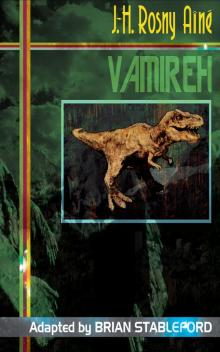 Vamireh
Vamireh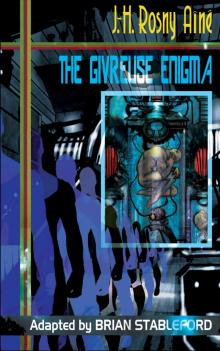 The Givreuse Enigma
The Givreuse Enigma Three Science Fiction Novellas: From Prehistory to the End of Mankind
Three Science Fiction Novellas: From Prehistory to the End of Mankind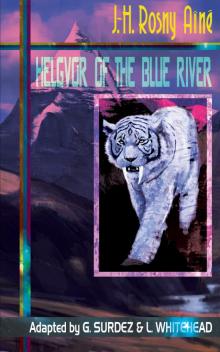 Helgvor of the Blue River
Helgvor of the Blue River The World of the Variants
The World of the Variants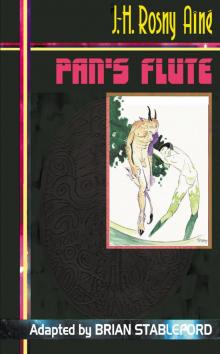 Pan's Flute
Pan's Flute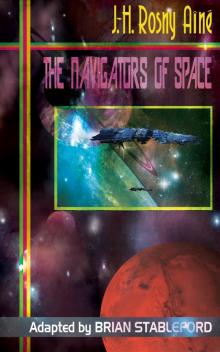 The Navigators of Space
The Navigators of Space The Mysterious Force
The Mysterious Force